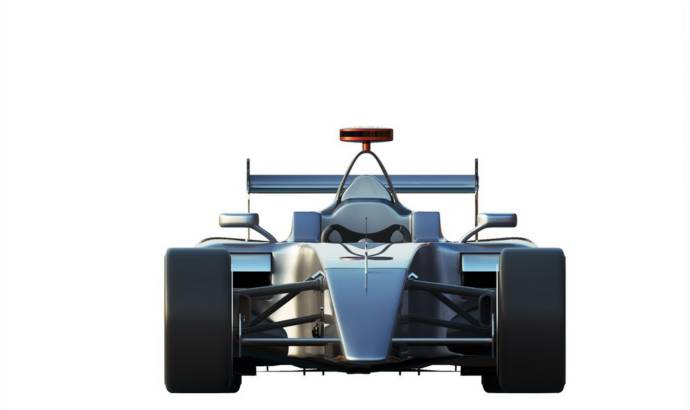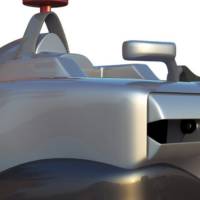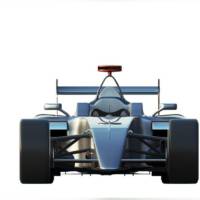F1 Racing magazine has teamed up Renault F1 chief designer Pat Symonds to offer motorsport fans a glimpse of what the 2020 Formula 1 car will look like and what kind of performance will it return.
According to them, the 2020 Formula 1 car will be designed in accordance with ground effects aerodynamics, with low-profile tyres fitted on bigger wheels, a non-downforce rear wing and a Kinetic Energy Recovery System (KERS) which will produce 250 BHP.
Also the 2020 Formula 1 car is expected to remain an open wheel, open cockpit racer. No details in terms of motorisation, but we already known that for the 2013 season the F1 cars will be using a 1.6-litre turbo engine which will reduce consumption by 35 percent.
Haymarket press release :
Formula 1 car design will undergo more radical change in the next 10 years than in the last decade, according to the new F1 Racing magazine.
The magazine, revamped at the end of last year, has teamed up with Renault F1 chief designer Pat Symonds to give motorsport fans a glimpse of what the F1 car of 2020 will look like and how it will perform.
Low-profile tyres on bigger wheels, the return of ground effects aerodynamics, Kinetic Energy Recovery Systems (KERS) that produce 250bhp and a standard, non-downforce rear wing will all be components, according to Symonds.
The article, featured in Issue 179 of F1 Racing, on sale from January 27, theorises on how future regulation changes could lead to radically-different F1 designs.
The results take into account the likelihood of future rules on fuel consumption and CO2 emissions but assume that F1 will remain an open-wheel, open-cockpit formula.
F1 teams have already been instructed to reduce their fuel consumption by 35% in future generations of racing cars, while a more environmentally-friendly 1.6-litre turbo engine will be introduced for the 2013 season.
Symonds said: “Taking into consideration all the variant motivators that drive regulations, I expect that the F1 car of 2020 will demonstrate much more change than has been seen over the past 10 years.
“A few simple assumptions can determine the basic architecture of the car,” he explains. “By the time we add a few changes, such as larger wheels and low-profile tyres, we start to get a fairly clear picture of what the car might look like.
“The illustrations we’ve produced are certainly an artistic impression, but they capture the essential characteristics of a car that will be contesting the Formula 1 World Championship in 2020.”
F1 Racing magazine is available in all good newsagents, priced £4.60.





